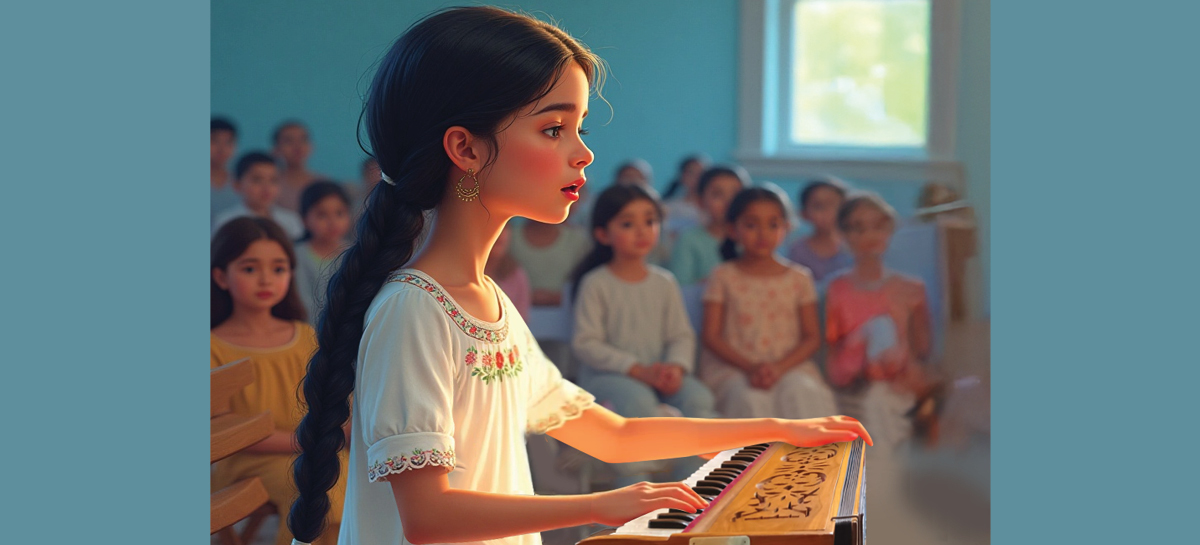For our member Ms. R. Mukherjee, the Bengali New Year and Rabindra Jayanti saw grand cultural gatherings in the heart of Lucknow. In this memoir, she looks back fondly at a time when community, creativity, and celebration defined the month of Baishakh.
I grew up in Lucknow, where we used to celebrate Poila Boishakh (Bengali New Year) with great enthusiasm. Back in those days, Lucknow was almost like a mini-Calcutta. There were many small clubs across the neighbourhoods, and we would go out for probhat pheri (early morning cultural processions), wearing white saris and frocks, singing songs—mainly by Tagore. These processions would converge at the Bengali Club, where we would sing together, feed each other sweets, and exchange flowers.
We were especially busy with festivities throughout the month of Baishakh. The Poila Boishakh celebrations were followed by preparations for Rabindra Jayanti (Tagore’s birthday). Several clubs and institutions would organise large-scale events and often bring in renowned artists and cultural personalities from Kolkata, such as Hemanta Mukhopadhyay and Manna Dey. In those days, Lucknow felt to me like a true pilgrimage site for music.
The day after the big shows, we—the children of the neighbourhood—would hold our own performances. We would take over a long room at a friend’s house and prepare a makeshift stage. Saris borrowed from our mothers and aunts became curtains, and we would perform Tagore’s songs and plays. The grown-ups encouraged us, and the ladies of the house would thoughtfully prepare luchi, aloo dom, and bodey for us.
From the ages of 14 to 16, I began participating in larger events on Poila Boishakh and Rabindra Jayanti. These programmes often found mention in the local newspapers. The trainers and lead performers were all talented artistes. Our songs were led by Ms Aruna Sengupta, a student of the renowned Rabindrasangeet exponent Kanika Bandopadhyay, and our dances were choreographed by a teacher from Santiniketan.
Among our troupe was a dance teacher who used to dress up as Shiva. His wife, also a fine dancer, would play the part of Parvati. Whenever she made a mistake, he would get annoyed. Shiva’s cosmic dance would pause, and his taandav would turn into a scolding, directed at his wife as though she were merely a student!
Despite tempers occasionally flaring, the events were always full of fun and excitement. Nowadays, I don’t see the same level of enthusiasm for celebrations on a similar scale. When I first moved to the society I currently live in, I would still see small performances on Rabindra Jayanti. The young girls used to sing and dance back then, but over the years, the scale has dwindled. The size of the stages, the energy, the excitement—none of it compares to the lengths we once went to in order to make those occasions truly memorable.
(As narrated to Support Elders by our member)
Categories
Baishakh in Lucknow

